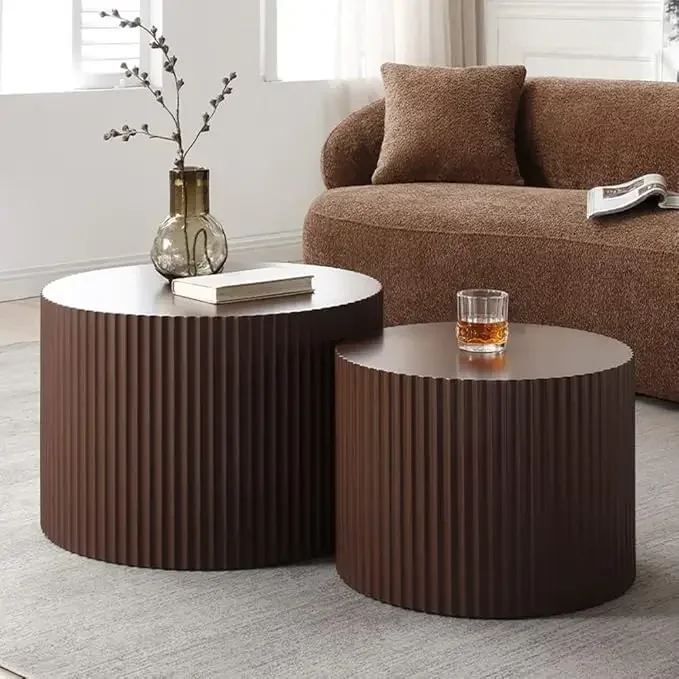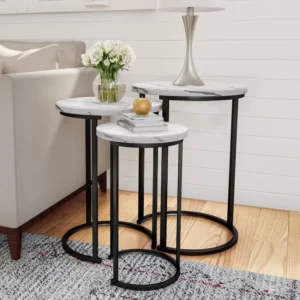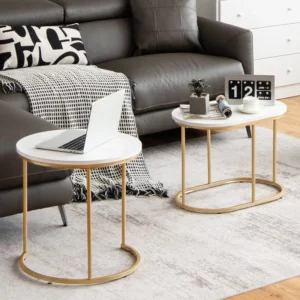Introduction: The Timeless Elegance of Mid-Century Nesting Coffee Tables
Mid-century nesting coffee tables represent the perfect marriage of form and function in home design. With their clean lines, organic shapes, and practical versatility, these tables have maintained their popularity in homes for decades. What makes these pieces truly special is how they blend artistic expression with everyday usefulness—serving as both practical furniture and statement pieces that anchor a room’s aesthetic.
These iconic tables feature distinctive tapered legs, minimalist forms, and a celebration of natural materials that speak to the mid-century modern design philosophy. The genius of nesting tables lies in their adaptability—they can expand to provide additional surface area when needed or tuck neatly together to save space when not in use.
In this guide, we’ll explore creative ways to integrate these versatile pieces into your home. From styling techniques and material selections to placement strategies and complementary furniture pairings, you’ll discover how space-saving nesting coffee tables can transform your living spaces. Whether you’re furnishing a compact apartment or a spacious living room, mid-century modern nesting table sets offer endless design possibilities that blend timeless appeal with practical functionality.
Essential Characteristics of Mid-Century Modern Nesting Tables
Understanding the defining elements of mid-century nesting coffee tables helps you recognize authentic pieces and appreciate their enduring appeal. These tables weren’t merely functional—they represented a design philosophy that continues to resonate with modern homeowners.
The quintessential elements of authentic mid-century nesting tables include:
- Clean, uncluttered lines balanced with organic shapes (both geometric and biomorphic forms)
- Quality natural materials including walnut, teak, oak, and birch woods, often complemented by glass tops and metal accents
- Distinctive tapered legs that create a sense of lightness and visual space beneath the tables
- Functional minimalism that eliminates unnecessary ornamentation while maintaining visual interest
What made these tables revolutionary was their perfect balance between practicality and beauty. Unlike earlier furniture that often prioritized decoration over function, mid-century nesting tables embraced the idea that everyday objects should be both useful and aesthetically pleasing.
Today’s versions honor these traditions while incorporating contemporary needs—more durable finishes, sustainable material options, and proportions that work with modern seating arrangements. The result is furniture that feels both timeless and fresh, capable of blending into various interior styles while maintaining its distinct character.
When shopping for these iconic pieces, explore our curated collection of mid-century modern nesting coffee tables that showcase authentic design principles while meeting contemporary quality standards.
Strategic Placement: Positioning Nesting Tables for Maximum Impact
The versatility of nesting coffee tables allows for numerous arrangement possibilities, but thoughtful placement maximizes both their visual appeal and functionality. Consider these strategic approaches for different living situations:
Central Living Room Arrangements:
– Position the main table 18-24 inches from the sofa for comfortable reach
– Ensure table height is slightly lower than or equal to sofa seat height
– Allow sufficient clearance (at least 30 inches) for comfortable foot traffic around the arrangement
Conversation Areas:
– Create intimate seating groups by positioning tables where they’re accessible from multiple seating options
– Pull out smaller nested tables to serve as individual surfaces during gatherings
– Consider placing a smaller nested table between chairs that don’t have direct access to the main table
Corner Solutions:
– Activate underutilized corners by positioning a nested table with a lamp or plant
– Use smaller tables from the set to create transition zones between different functional areas
– Layer tables at different depths to create visual interest in otherwise empty corners
For smaller homes, understanding how to maximize small spaces with nesting coffee tables becomes even more crucial. Their ability to expand when needed and contract when space is at a premium makes them ideal for apartments and compact living areas.
The beauty of nesting tables is their adaptability during entertaining. When guests arrive, smaller tables can be distributed throughout the room, ensuring everyone has a convenient surface for drinks or snacks. When the gathering ends, they tuck neatly back together, restoring open floor space. This makes them an excellent nesting tables space-saving solution for homes of all sizes.
Tabletop Styling: Curating Beautiful and Functional Displays
Creating visually appealing tabletop arrangements is an art form that transforms nesting coffee tables from simple furniture pieces into design statements. Follow these principles to develop displays that are both beautiful and practical:
Balance and Composition:
– Apply the “rule of three” by grouping objects in odd numbers for visual interest
– Vary heights and textures to create dimension—pair tall items like vases with medium-height books and low, wide elements
– Create visual triangles with your arrangements to guide the eye naturally across the surface
Essential Styling Elements:
– Books and magazines (select covers that complement your color scheme)
– Natural elements like small plants, flowers, or interesting stones
– Sculptural objects or meaningful personal items that reflect your personality
– Practical items like coasters, candles, or a small tray to corral remote controls
Styling Different Tables in the Set:
– Use the main table for larger statement pieces and everyday items
– Style smaller nested tables with simpler arrangements—perhaps a single candle, small plant, or art object
– Consider function when styling—keep frequently accessed items on the main table
For seasonal refreshes, swap out accent pieces to reflect the time of year—bright florals for spring, coastal elements for summer, warm textures for fall, and festive touches for winter.
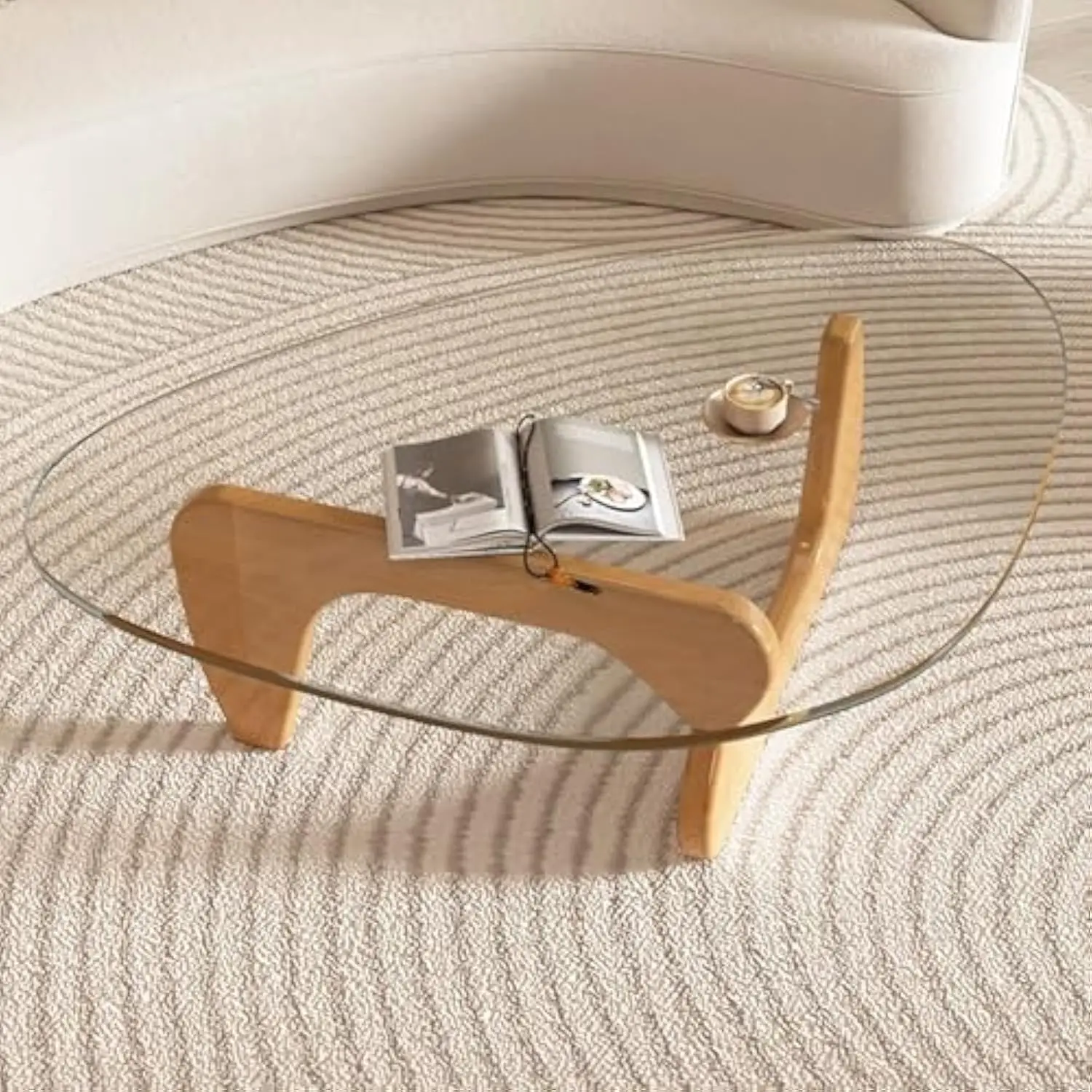
When styling tables with delicate surfaces, consider browsing our collection of mid-century modern glass top coffee tables that provide excellent display surfaces while maintaining the airy, light aesthetic characteristic of mid-century design.
Material Harmony: Selecting and Pairing Table Materials
The materials used in mid-century nesting coffee tables significantly impact both their visual impression and how they integrate with your existing décor. Traditional mid-century designs favored natural materials that showcased craftsmanship and organic beauty.
Classic Material Choices:
– Solid Woods: Walnut remains the quintessential mid-century choice with its rich, warm tones. Teak, oak, and birch were also popular for their distinct grain patterns and durability.
– Glass: Clear or smoked glass tops create lightness and visual space, perfect for smaller rooms where heavy furniture would feel overwhelming.
– Metal Accents: Brass, chrome, or black metal details often appear as leg caps, trim, or structural elements, adding sophistication and durability.
When selecting materials, consider how they affect your space’s overall feel. Darker woods like walnut create grounding, sophisticated focal points, while lighter woods and glass contribute to a more open, airy atmosphere. Each material choice also impacts maintenance requirements—glass shows fingerprints but wipes clean easily, while wood develops character over time but may require occasional conditioning.
Creating contrast through thoughtful material pairings adds visual interest. Consider tables that combine wood frames with glass tops, or pieces that feature contrasting wood tones between the main table and nested components. These combinations add depth and character to your arrangement.
Our collection of mid-century modern solid wood coffee tables offers various authentic wood options that honor traditional mid-century craftsmanship. For specific guidance on working with transparent surfaces, our guide to glass top mid-century coffee table layout tips provides practical styling advice.
Shape Selection: Choosing Forms That Enhance Your Space
The shape of your nesting coffee tables significantly impacts both their visual presence and practical functionality in your space. Mid-century designs embrace various forms, each offering different advantages for room layout and use.
Common Nesting Table Shapes:
– Round: Creates flow in a room by eliminating sharp corners, ideal for high-traffic areas and smaller spaces
– Rectangular: Offers maximum surface area and pairs well with standard sofas, providing balanced proportions
– Triangular or Organic: Adds visual interest and unexpected shapes that serve as conversation starters
– Oval: Combines the flowing lines of round tables with the practical surface area of rectangular designs
When selecting table shapes, consider your room’s existing furniture. Rectangular tables typically complement standard straight-sided sofas, while round or oval tables work beautifully with curved seating or in conversational groupings. For rooms with mixed furniture styles, organic shapes can serve as transitional elements that unite different pieces.
Traffic flow should also influence your shape choice. Rooms with narrow walkways benefit from rounded corners that prevent painful shin encounters, while spacious rooms can accommodate more dramatic angular forms. The nested arrangement also matters—some shapes stack vertically while others slide partially beneath each other, affecting how much floor space they occupy when nested.
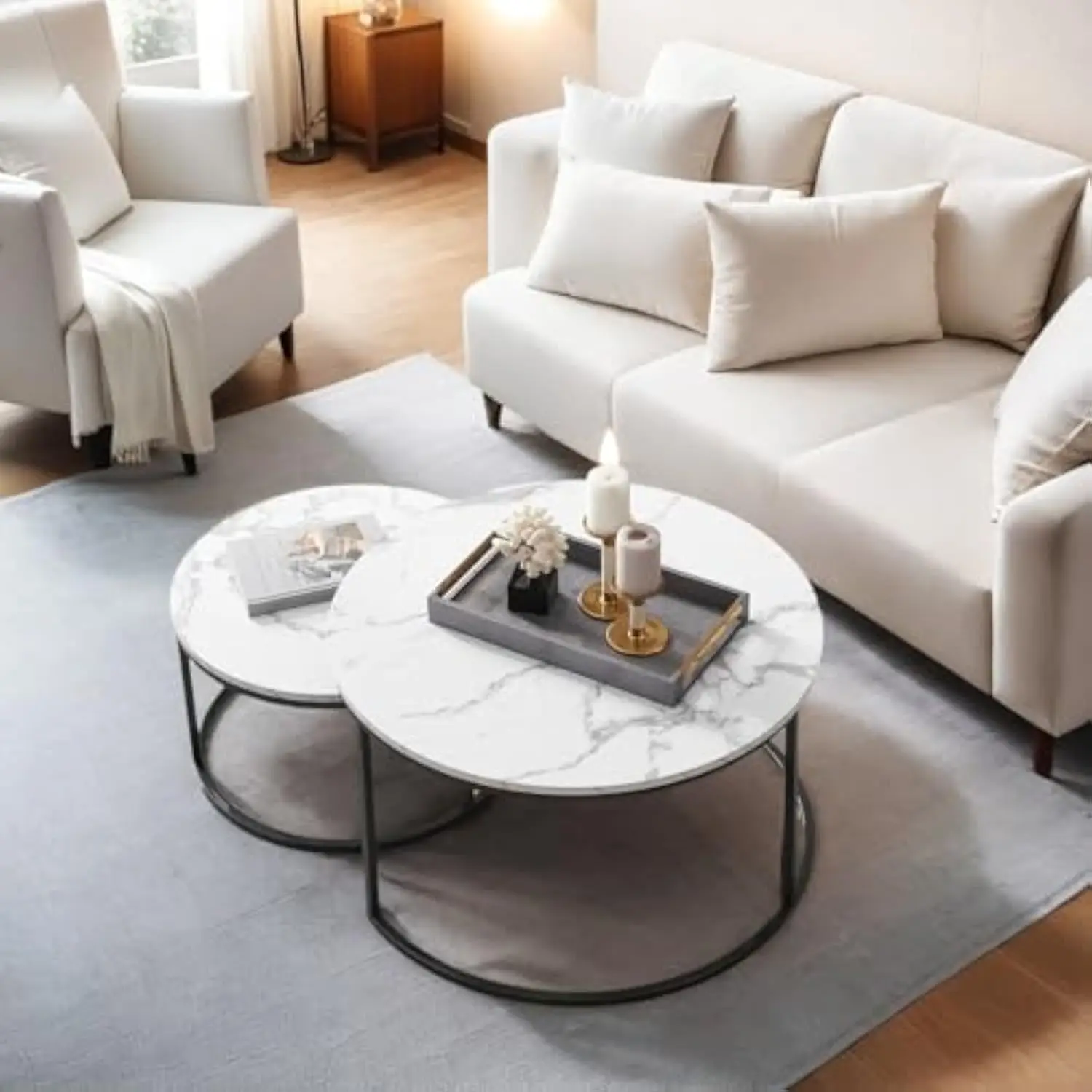
For spaces where softness and flow are priorities, explore our selection of mid-century modern round coffee tables that exemplify the organic principles of mid-century design while providing practical functionality.
Space Optimization: Maximizing Functionality in Limited Areas
Nesting coffee tables truly shine in spaces where every square foot matters. Their ingenious design allows you to expand surface area when needed and reclaim floor space when not in use, making them ideal for smaller homes and apartments.
Space-Saving Strategies:
– Position nested tables perpendicular to your sofa when not in use to create a more compact footprint
– Use the smallest table from your set as a movable surface that can function as a laptop stand, snack table, or plant display
– Select glass-topped nesting tables to create visual openness in tight spaces
– Consider tables with storage elements like shelves or drawers to maximize functionality
Beyond space efficiency, nesting tables offer remarkable versatility. During gatherings, they can be distributed throughout a room to create convenient surfaces for guests. When entertaining larger groups, they can unlock home entertaining possibilities by serving as buffet surfaces, drink stations, or game tables.
For the ultimate in space efficiency, look for designs where the tables nest completely—smaller tables disappearing entirely beneath the larger one—rather than partial nesting that leaves portions exposed. This complete nesting maximizes floor clearance when the full set isn’t needed.
If traditional coffee tables don’t suit your space constraints, explore creative small space coffee table alternatives that provide the functionality you need without overwhelming your room. The adaptable nature of nesting tables makes them ideal candidates for small-space living without sacrificing style or functionality.
Complementary Furniture: Creating a Cohesive Mid-Century Look
To create a harmonious mid-century modern space, your nesting coffee tables should converse visually with surrounding furniture. The goal is cohesion without matching—pieces that share design DNA while maintaining their individual character.
Furniture Pairings That Work Well:
– Low-profile sofas with clean lines and tapered legs echo the proportions of mid-century tables
– Lounge chairs with organic shapes provide counterpoint to geometric table designs
– Sideboards or credenzas with similar wood tones create material consistency
– Simple drum or tripod floor lamps complement the tables’ clean lines
When selecting complementary pieces, focus on common elements rather than exact matches. Consistent leg styles (particularly tapered legs), similar wood tones, and shared proportions create subtle connections between furniture items. These connections create a cohesive look without the stiffness of matching furniture sets.
Rugs play a crucial role in anchoring your furniture arrangement. For mid-century spaces, consider geometric patterns, abstract designs, or textured solids in colors that complement your wood tones. The rug should be large enough to accommodate both the tables and front legs of surrounding seating for visual unity.
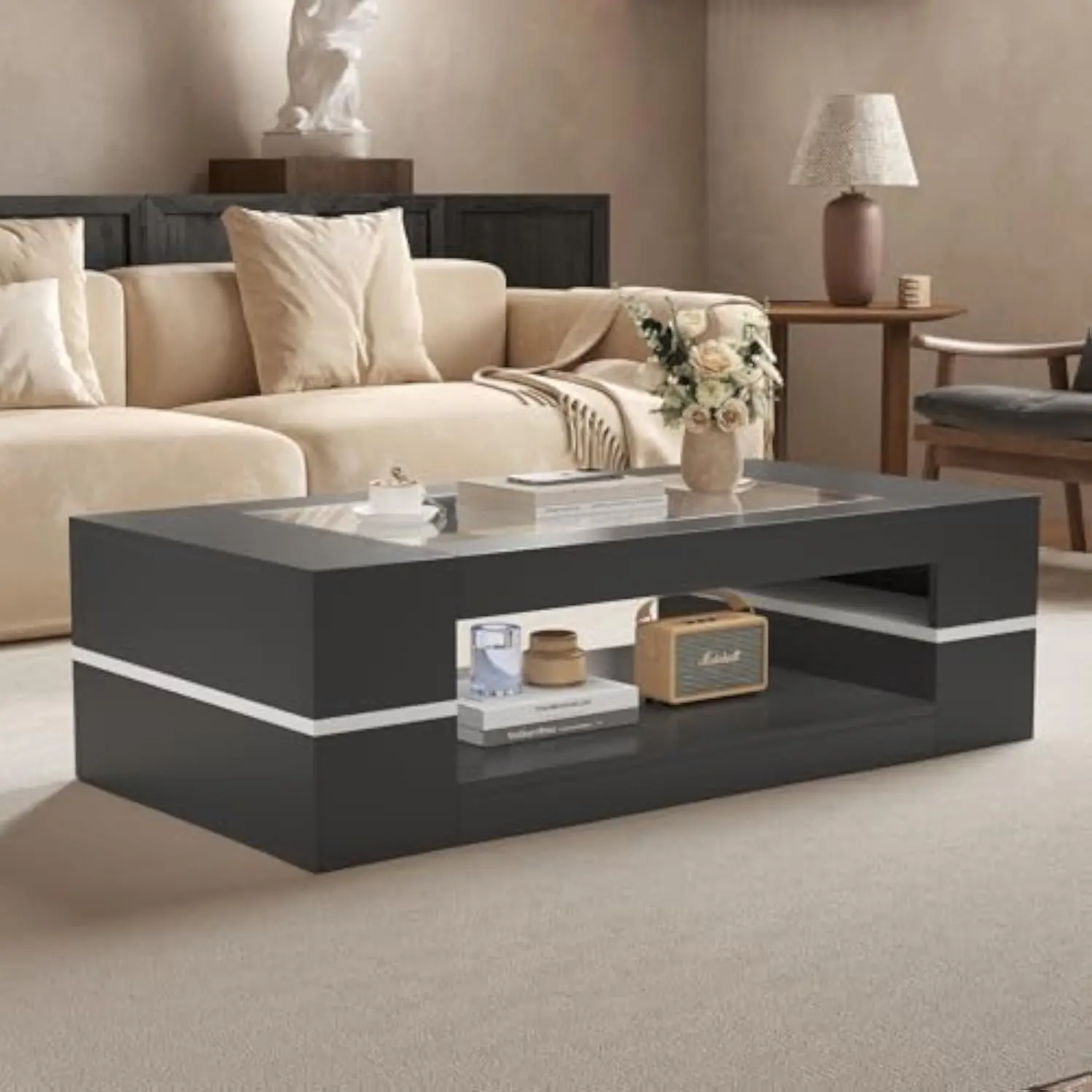
To achieve a perfectly coordinated look, consider our mid-century modern nesting table sets that provide thoughtfully designed collections where each piece complements the others while maintaining visual interest.
Mid-Century Modern Solid Wood Coffee Tables, Mid-Century Modern Teak Coffee Tables
$879.95 Select options This product has multiple variants. The options may be chosen on the product pageMid-Century Modern Danish Coffee Tables, Mid-Century Modern Oval Coffee Tables, Mid-Century Modern Solid Wood Coffee Tables
$390.05 Select options This product has multiple variants. The options may be chosen on the product pageMid-Century Modern Nesting Side & End Tables, Mid-Century Modern Nesting Table Sets, Mid-Century Modern Round Side & End Tables
Price range: $239.35 through $273.06 Select options This product has multiple variants. The options may be chosen on the product pageMid-Century Modern Glass Top Coffee Tables, Mid-Century Modern Glass Top Side & End Tables
$460.58 Select options This product has multiple variants. The options may be chosen on the product pageMid-Century Modern Glass Top Coffee Tables, Mid-Century Modern Vintage Coffee Tables, Mid-Century Modern Vintage Side & End Tables
$725.36 Select options This product has multiple variants. The options may be chosen on the product pageMid-Century Modern Nesting Coffee Tables, Mid-Century Modern Nesting Table Sets
$361.45 Select options This product has multiple variants. The options may be chosen on the product page
Color Schemes: Developing a Harmonious Palette
The color palette you choose significantly impacts how your mid-century nesting tables integrate with your overall interior design. Traditional mid-century modern aesthetics embraced both vibrant pops of color and warm neutral foundations, creating spaces that felt both energetic and grounded.
Effective Color Approaches:
– Use wood tones as neutral anchors, treating them as part of your color scheme rather than separate from it
– Incorporate 1-3 accent colors that complement your wood finishes (oranges and blues pair beautifully with walnut, while greens and yellows enhance teak)
– Balance warm elements (wood, terracotta, amber) with cool tones (blues, greens, grays) for visual tension
– Consider the 60-30-10 rule: 60% dominant color (often neutrals), 30% secondary color, and 10% accent color
The wood tones in your tables establish a foundation for your color decisions. Walnut’s deep, rich color works beautifully with both jewel tones (emerald, sapphire) and earthy hues (terracotta, olive). Lighter woods like oak or birch pair well with pastels and cooler neutrals like sage green or slate blue.
For a contemporary take on mid-century color, consider subdued versions of classic mid-century hues—mustard becomes a softer gold, avocado transforms into olive or sage, and bright orange mellows to terracotta or rust. These updated interpretations honor the mid-century aesthetic while feeling fresh and current.
The design benefits of round mid-century tables extend to their color integration as well—their softer silhouettes allow them to adapt to various color schemes without creating harsh visual contrasts that might occur with more angular forms.
Beyond the Living Room: Creative Applications Throughout the Home
While nesting coffee tables traditionally grace living rooms, their versatility makes them valuable additions to nearly every room in your home. Their adaptable nature allows them to solve various functional needs while maintaining design consistency throughout your space.
Alternative Placement Ideas:
Bedroom Applications: Use smaller nested tables as nightstands at different heights, or position the complete set near a reading chair to hold books, lighting, and personal items
Home Office Solutions: Create flexible work surfaces for different tasks—the main table for your laptop and smaller tables for reference materials or note-taking
Entryway Styling: Position nesting tables in an entryway to create a drop zone for mail, keys, and bags that can expand when needed for larger items
Dining Area: Keep smaller tables nested nearby to provide extra serving space during meals or to accommodate additional guests
Bathroom: Use water-resistant tables to create elegant tiered displays for towels, plants, and toiletries in a larger bathroom
The key to successful alternative placements is considering both function and visual weight in each space. In smaller rooms, select tables with lighter materials and open designs that won’t overwhelm the area. In transition spaces like hallways, choose narrow profiles that won’t impede movement.
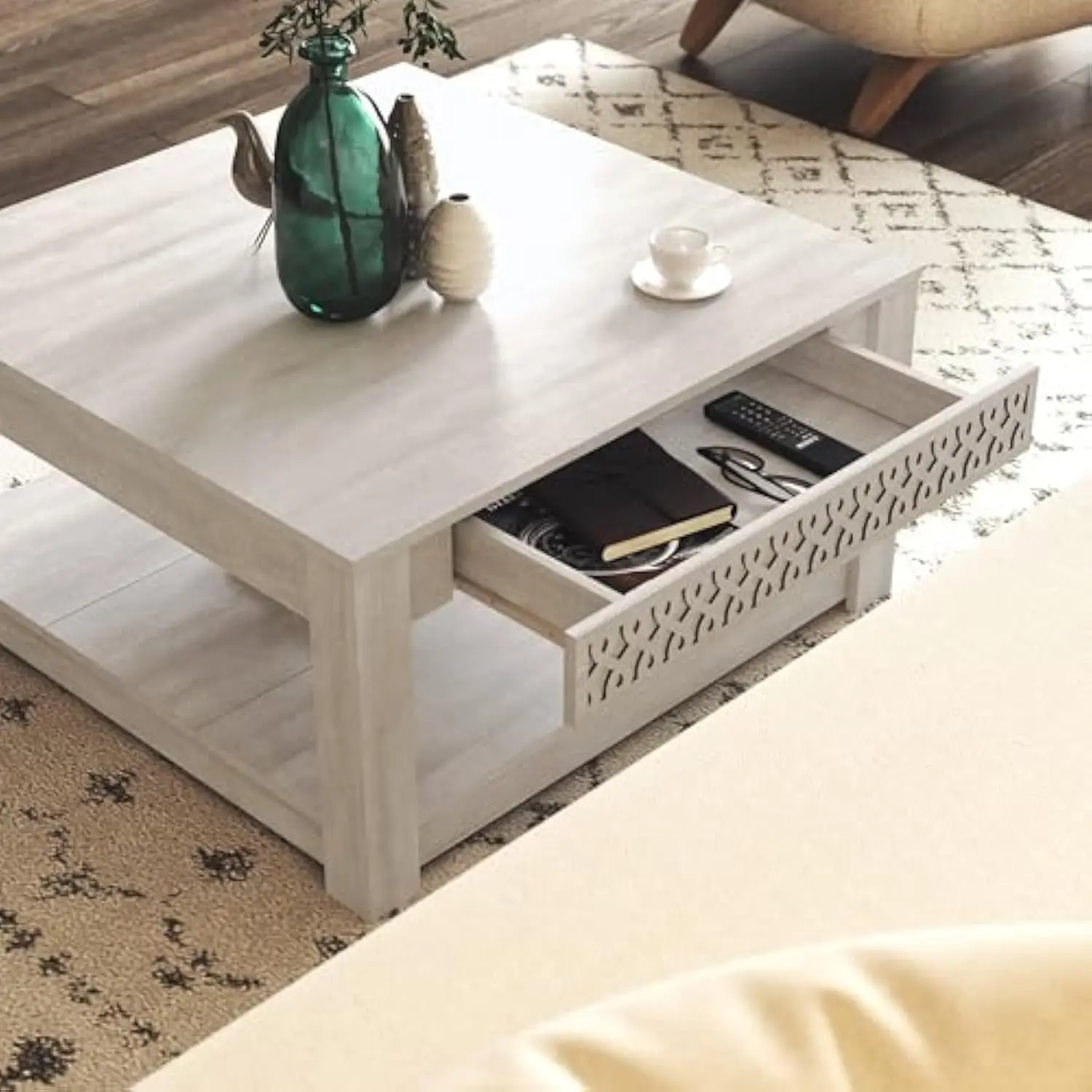
For multipurpose applications throughout your home, explore our mid-century modern walnut coffee tables that offer the versatility and durability needed for daily use in various settings.
Frequently Asked Questions: Expert Answers to Common Queries
How do I determine the right size nesting tables for my space?
Measure your sofa height and select tables that are equal to or slightly lower than your sofa seat (typically 16-18 inches tall). For length, a good rule is to choose a main table that’s about two-thirds the length of your sofa. Always leave 18-24 inches between the table and seating for comfortable leg room, and ensure at least 30 inches of walking space around the arrangement.
Can I mix mid-century nesting tables with other design styles?
Absolutely! Mid-century pieces work particularly well with Scandinavian, industrial, and contemporary designs due to their clean lines and functional focus. When mixing styles, look for connecting elements—perhaps the wood tone of your tables matches other wood accents in the room, or their geometric shapes echo patterns in your textiles. This creates visual connections that make diverse styles feel intentional rather than disjointed.
What’s the best way to care for different table materials?
Wood tables benefit from regular dusting and occasional treatment with appropriate wood conditioners (avoid silicone-based products). Glass surfaces should be cleaned with ammonia-free glass cleaners and soft cloths to prevent scratching. For metal components, simply dusting regularly and promptly wiping up any moisture will maintain their finish. Always use coasters with hot items and liquids to protect all surfaces.
How can I identify quality in mid-century nesting tables?
Look for solid wood construction (rather than veneers over particleboard), smooth drawer operation (if applicable), and precise joinery at corners and legs. Quality pieces feature consistent finishes, symmetrical proportions, and appropriate weight for their size. The exceptional designs of nesting coffee tables often reveal their quality through these subtle details that affect both appearance and longevity.
Final Thoughts: Embracing Mid-Century Modern Style with Nesting Tables
Nesting coffee tables represent the perfect embodiment of mid-century design philosophy—they’re beautiful, functional, and adaptable to changing needs. Their ingenious design allows them to transform from space-saving solution to expanded entertaining surface within moments, making them ideal companions for contemporary living.
As you incorporate these versatile pieces into your home, remember that their beauty comes from both their form and their function. Don’t be afraid to experiment with different arrangements, styling approaches, and room placements to discover the full potential of these design classics.
At Hearth Forms, we believe that thoughtfully designed furniture should enhance both the aesthetics and functionality of your home. Nesting coffee tables achieve this balance beautifully—serving as both practical surfaces for daily life and artistic expressions that elevate your interior design.

